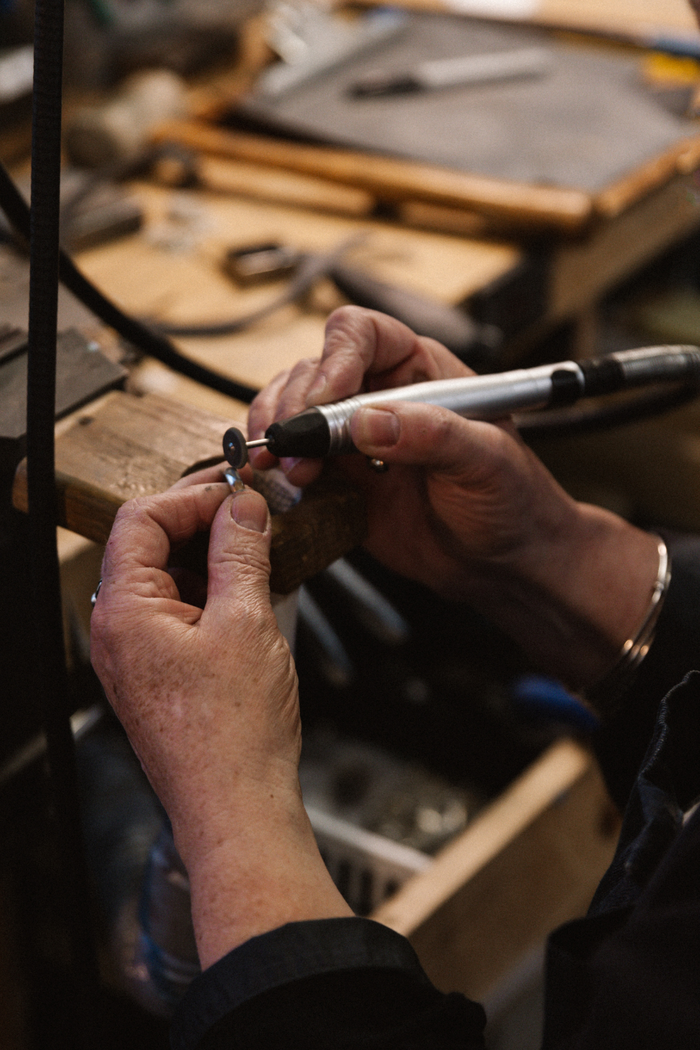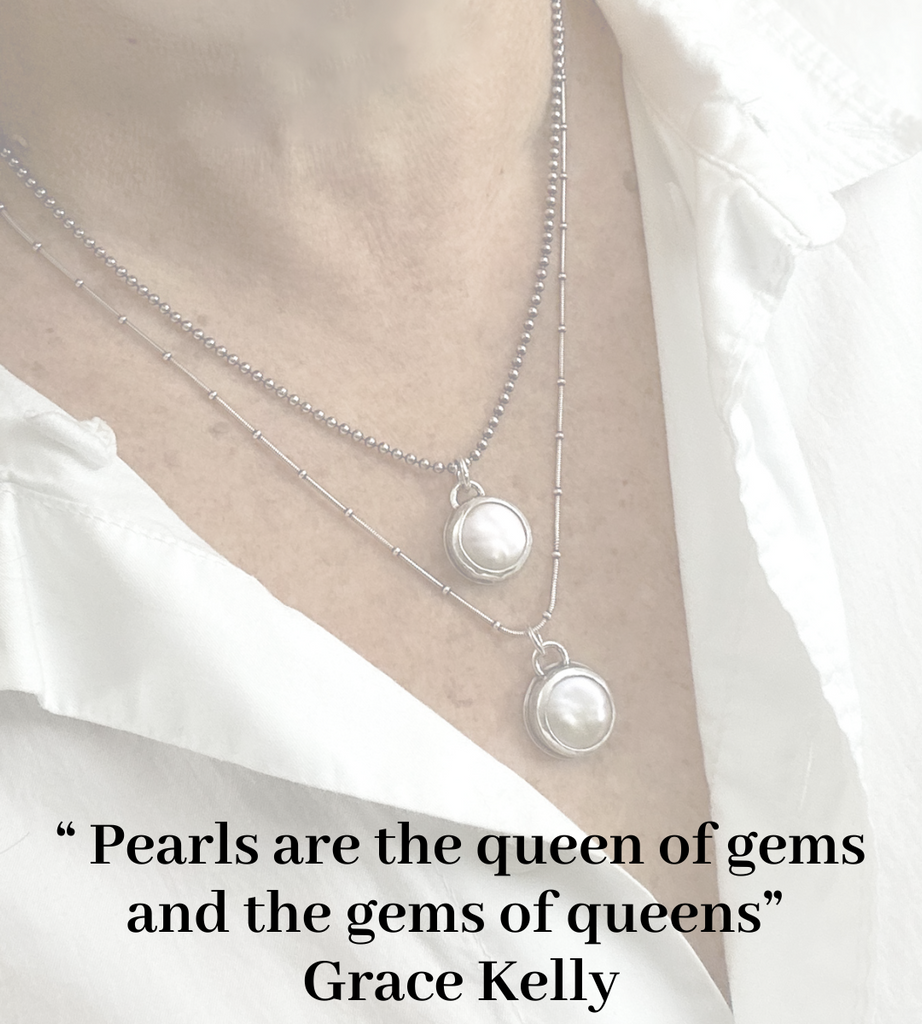
All Digital Tutorials
8 items
Here you will find a collection of jewelry making video tutorials and pdf downloads. All digital products are emailed to...

I have only recently become somewhat obsessed with pearls. Not sure why I didn't incorporate them in my designs from the get go. They are so luscious and come in many different shapes, colors and sizes. My current pearl designs are some what simple because sometimes less is better. However, I am currently working on a new pearl collection and I am loving how it is coming along. I will be combining pearls with other beautiful gemstones I snagged in Tucson on my last trip.
Citrines, willow creek jaspers, variscite and more.

I started to dive more into the history and where pearls are from today. Did you know that the oldest pearl discovered was from a sarcophagus of a Persian princess who died around 520 BC. They definitely have been around for a while. Pearls have been used as adornments as far back as ancient Greece. Only the wealthy nobles, kings and queens could afford the natural pearl. By the late 1900's the farm culturing of saltwater pearls began in Asia and made these luscious beauties more affordable for everyone.
I find it very interesting how pearls are made. Naturally, oysters make pearls in response to a small irritant like a grain of sand that some how makes it's way into the mantle of the oyster. That is the tissue surrounding the oyster's body. The oyster then produces what is called a "nacre", a protective coating that reduces the irritation. Overtime, layers of nacre will form over the irritant and form the pearl. "Nacre is also called mother of pearl, and it is also what lines the inside of the mollusk's shell.
The difference between naturally and cultured pearls is that the pearl farmer embeds the irritant in between the shell and the mantle. With freshwater pearls, no irritant needs to be added. Pearl farmers just need to cut the oysters soft tissue enough to begin the magical pearl making process.

My favorite pearls are little keshi pearls. I love their odd shapes. They are named after the Japanese word "poppy seed". They occur differently, kind of by mistake. During the pearl cultivation, sometimes excess nacre deposits on the lip of the oyster and overtime they become little keshi pearls. I used keshi pearls for the rings in the above photo. They have a beautiful white luster. I made 24 of these rings and you can find them in the Frying Pan Gallery in Wellfleet Ma. There may be a few left.
There a five kinds of cultured pearls. The most classic is the Akoya pearl. They are perfectly round with a bright white luster. They are the most valuable because they are perfectly round but some baroque shapes can also happen. These are saltwater oyster cultured in Japan, China and Vietnam.
Freshwater pearls from China have a wonderful rainbow of colors and are farmed in man made fresh water lakes or ponds. They grow into free form baroque shapes and round but are less expensive then the Akoya.
Tahitian Pearls are mostly black pearls cultured in saltwater lagoons. They are one of the largest pearls around and can be almost 18mm. These oysters can also grow to almost a foot in diameter! So amazing!
South Sea Pearls are also one of the largest cultured pearl. They are farmed in saltwater and this oyster can also be up to a foot in diameter. They have a white and golden luster.
The Sea of Cortez Pearls are probably the most rarest. There is only one farm and produce less then 4000 a year. They can be quite colorful.
Now that I have finally snagged some keshi and free form pearls I am definitely using them in this new collection.
SHOP THE NEW PEARL COLLECTION!
Do you want to stay up to date with all events? Join my email list and gain early access to all new designs and sales!

8 items
Here you will find a collection of jewelry making video tutorials and pdf downloads. All digital products are emailed to...

71 items
Explore my made-to-order jewelry collection, featuring handcrafted rings, necklaces, earrings, and bracelets. Each piece is created just for you, ensuring...

153 items
Discover my one-of-a-kind jewelry collection, featuring unique rings, necklaces, earrings, and bracelets—each handcrafted in my Massachusetts studio. These exclusive designs...
Leave a comment